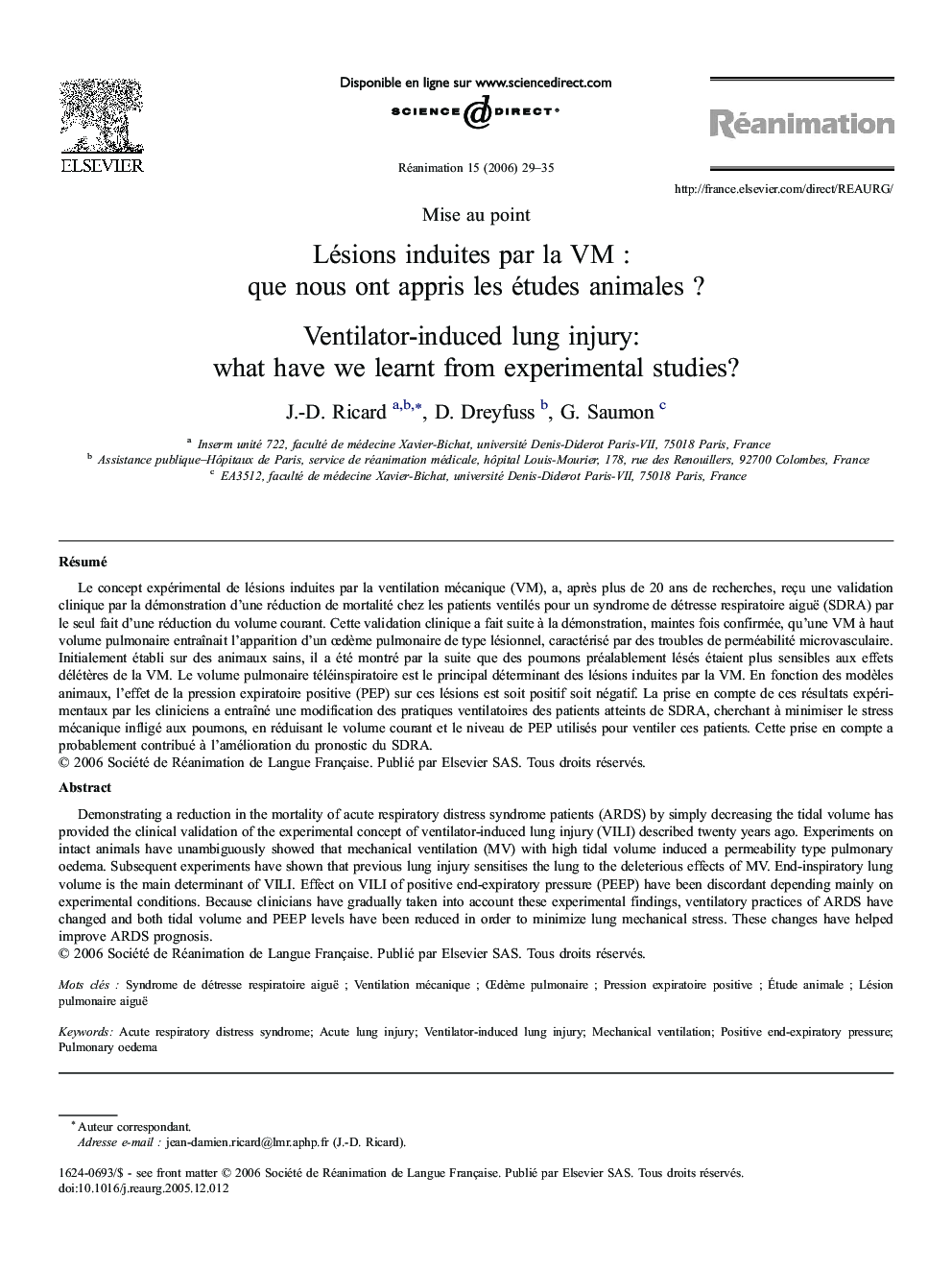| Article ID | Journal | Published Year | Pages | File Type |
|---|---|---|---|---|
| 2612441 | Réanimation | 2006 | 7 Pages |
Abstract
Demonstrating a reduction in the mortality of acute respiratory distress syndrome patients (ARDS) by simply decreasing the tidal volume has provided the clinical validation of the experimental concept of ventilator-induced lung injury (VILI) described twenty years ago. Experiments on intact animals have unambiguously showed that mechanical ventilation (MV) with high tidal volume induced a permeability type pulmonary oedema. Subsequent experiments have shown that previous lung injury sensitises the lung to the deleterious effects of MV. End-inspiratory lung volume is the main determinant of VILI. Effect on VILI of positive end-expiratory pressure (PEEP) have been discordant depending mainly on experimental conditions. Because clinicians have gradually taken into account these experimental findings, ventilatory practices of ARDS have changed and both tidal volume and PEEP levels have been reduced in order to minimize lung mechanical stress. These changes have helped improve ARDS prognosis.
Keywords
Related Topics
Health Sciences
Medicine and Dentistry
Emergency Medicine
Authors
J.-D. Ricard, D. Dreyfuss, G. Saumon,
